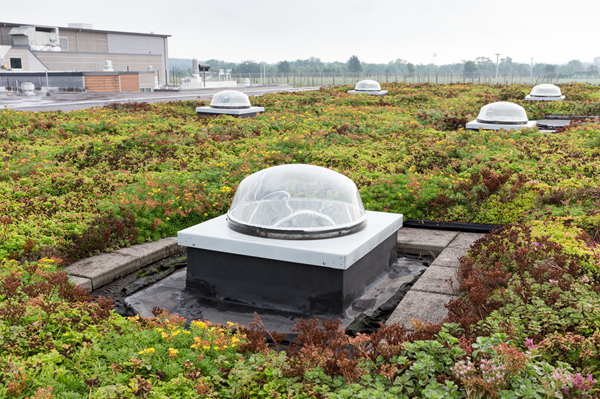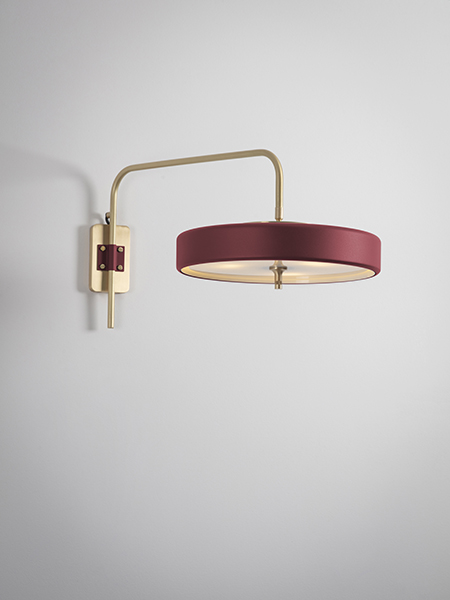Lighting is often something the average person takes for granted, but as any architect or designer is aware, it makes a huge difference – often changing the entire mood of a room (and the people in it).
For example, access to adequate natural lighting (or alternatively, circadian lighting) can help improve our mood and productivity, while also encouraging healthy sleeping patterns because it keeps our sleep-wake cycle in sync with the natural environment. On the other hand, excessive exposure to harsh artificial lighting can cause us to exist in a constant stage of low-grade jetlag, throwing off our body clock and making us tired and irritable.
Natural lighting is ideal, but depending on the site or type of build, this is not always possible. In a hospitality context for example, there are many instances where natural lighting is either not possible or simply not preferred due to the nature of the space and its use case.
Where natural lighting is preferred, architects and designers may wish to consider a solution like Solatube, which is a technologically advanced skylight system. What separates it from a traditional skylight is the use of a patented daylight-capturing dome lens that redirects low-angle sunlight for maximum light capture, rejects overpowering summer midday light and provides consistent daylighting throughout the day.
According to the company, the solution’s tubing is made of the world’s most reflective material, which offers the highest specular reflectivity (up to 99.7 percent) and provides the purest possible colour rendition, so colours are brighter and truer. It also focuses on delivering the visible spectrum of light, minimising transfer of the infrared spectrum (aka. heat).

Oak Hotel / Solartube
The benefit of using this solution in a hospitality application is that it provides safe natural light, promoting healthy circadian function while avoiding damaging UV rays and excess heat load. The result is a comfortable hospitality space that functions as a better workspace for employees, while also providing an environment that encourages patrons to stay longer.
One key example of this product’s application is in Oak Hotel, located in the Far North Queensland city of Cairns. Designed by CA Architects, the project was a five-storey, 76-room boutique hotel with a rooftop bar and garden, built above existing retail tenancies. The objective was to deliver daylight to internal rooms with no windows to the outside.
The proposed solution was to provide lighting ducts with internal false windows, through which daylight would be cast into the internal rooms. Following discussion between Solatube Australia and the project’s architects, it was decided that the design would utilise Solatube’s SolaMaster Daylighting Units with 99.7 percent spectralight infinity tubes to deliver daylight from the rooftop level to the first floor and the associated floors above.
Specifically, the company’s SolaMaster 750DS systems were chosen as the best solution to meet the brief. This required the use of tubes up to 17m long, which were enclosed within the fire-rated ductwork, allowing daylight to be delivered through these long tubes, into the ducts and through the false internal windows in the rooms.
In hospitality applications where natural light is not possible, you may consider the use of BoscoLighting’s aluminium extrusion linear lighting, which consists of aluminium extrusions with integrated LED strips that provide a continuous source of light. According to the company, the key benefit of the aluminium extrusions is that they act as a heat sink that dissipates the heat generated by the LEDs, helping to prolong the lifespan of the lighting system.

Western Sydney University Cafe / Bosco Lighting
This product also offers a diverse selection to meet different design requirements, with over 100 types of aluminium extrusions available and multiple options for each type. This extensive range allows designers to choose the most suitable extrusion profile for their specific application, whether it's recessed, surface-mounted, or pendant lighting. The company also provides customisation services whereby customers can specify the desired length, colour, and other parameters to ensure the lighting seamlessly integrates with the design concept.
Aside from its flexibility in terms of design options, the energy-efficient nature of LEDs is a key benefit for those considering the use of aluminium extrusion linear lighting in a hospitality space. Not only is it environmentally friendly, but it’s also cost-effective, reducing energy consumption and maintenance requirements.
A good example of this product’s use is in Western Sydney University Library Cafe, where the linear extrusions were employed to provide functionality while enhancing the ambiance of the space. This involved the installation of 104 linear extrusions, each custom-made to a length of 1.2 metres and finished in black. The extrusions were surface mounted in the ceiling, which allowed for a seamless integration that fit with the cafe’s modern design aesthetic.
According to the company, the customisability of the extrusions was essential to meeting the design brief. The ability to specify the length of the extrusions allowed for a precise fit within the café's ceiling, creating a seamless appearance. The black finish was also well-suited to the cafe’s contemporary aesthetic, resulting in a cohesive and visually appealing space.
If you’re looking for something extremely inconspicuous, one option to consider is Brightgreen’s Mini LED downlights. According to the company, it was in 2008 that they designed the world’s first downlight that matched 50 halogens in output. The Mini version is 80 percent smaller, which not only allows it to disappear into the architecture but also requires 80 percent less energy to manufacture, making it the lowest carbon footprint per lumen of any light on the market.
Compared to the typical downlight, this product is arguably better suited for use in hospitality design. This is because the typical downlight is large and visible, meaning they must be laid out uniformly in a lighting design. This can mean compromising on highlighting areas like tables, bars, artwork and other key design features.
Visually, Mini downlights disappear into the ceiling, allowing you to lay out the lights to match the fitout of the space and its optimal customer journey. Made to suit moody spaces, there is even a night shift option that transitions from warm (3000k) to ultra-cosy (1800k) as it dims on a standard dimmer switch.
On the other hand, if you are looking for some accent lights to add to the aesthetics and functionality of the space, you may wish to consider LightCo’s Revolve wall light. This product is a luxurious but minimalistic wall light that casts a soft light downward, while also having the ability to rotate 90 degrees in a perfect arc from the wall for maximum flexibility. The rotating mechanism makes it easy to direct light, providing both ambient and direct lighting for diners.

Revolve Wall light / LightCo
This product can be observed in Poulette Chicken Rotisserie, a Forster-based restaurant with interiors designed by Melissa Collison Design. The brief was to design a restaurant space evoking French retro charm and classic nostalgia. In response, Collison designed a deep red and ocean blue bistro-style restaurant with a stunning tessellated tile floor. Several LightCo lights were used in the fitout, including the Madame wall light in brass, the Cone straight outdoor wall light in aged brass and the Revolve wall light in oxblood. The result is a richly detailed interior that complements the restaurant’s menu and meets the design brief for the space.
Finally, if you are looking for a more tech-enabled lighting solution, it might be worth considering Aglo Systems’ Casambi wireless smart lighting control system. Just as the name suggests, Casambi is a wireless smart lighting control solution that allows users to easily manage and control their lighting systems.
There are two main components: the Casambi app and Casambi-enabled lighting devices. Once the app and lighting devices have been installed and connected the app serves as the control centre, allowing users to interact with their lighting system through their smartphones or tablet. According to the company, the app provides a user-friendly interface where users can create lighting scenes, adjust brightness levels, set timers and schedules, and even change the colour temperature of compatible LED lights.
When considering this product’s use in a hospitality space, the ability to have central management of lighting systems is a key advantage. Essentially, facility managers can control and monitor multiple areas or rooms from a single interface. They can easily adjust settings, monitor energy usage, and troubleshoot any issues remotely, simplifying maintenance and reducing operational costs. The product’s scheduling and automation features can also improve energy efficiency. For example, lighting can be programmed to turn on or off at specific times for events or based on occupancy levels, ensuring lights are only used when needed.
A good example of this product’s use is its inclusion in The Star Gold Coast Events Centre. An existing installation from over 40 years ago, Aglo was asked to project manage, upgrade, and retrofit the existing lighting and implement the Casambi wireless smart lighting control solution.

The Star Gold Coast Events Centre / Aglo Systems
The project had three key areas: the vast event gala space, the entry gallery, and the meeting/conference rooms. The initial challenge was retrofitting the existing 216 downlights in the event gala space, switching them from non-dimmable cool white to dimmable colour-changing and tunable white. The space required approximately 500 lux on average throughout the room, which had a ceiling height of around 6m. The chosen solution was Aglo’s ODM RGB-TW Sorrento Maxi (50W) product, which features a low glare specular reflector with diffused light output.
As the project was an upgrade of an existing installation, the second challenge was that implementing new wiring wasn’t possible due to limited accessible ceiling space. Therefore, Aglo elected to use Casambi as the control solution, configuring the luminaires using a Casambi module with RGB-TW (XY) profile.
The two remaining areas of the project, the entry gallery and the meeting conference rooms, required the existing fluorescent downlights to be dimmable LED with control. The client also wanted the ability to set different light modes to suit different event types, as well as night and cleaning modes for energy efficiency. Aglo chose to use Lumiparts Baza downlights due to their low glare and high efficiency. Mondolux Catania Maxi Spotlights were also used for highlighting purposes in the entry gallery space. Both solutions were integrated with a Casambi driver for control.
In the end, the total number of Casambi nodes used in the project was 436. Overall, the result is a rejuvenated event space that harnesses modern technology to improve functionality, aesthetics, and sustainability outcomes in the space.
SUPPLIERS
Aglo Systems
BoscoLighting
Brightgreen
LightCo
Solatube

